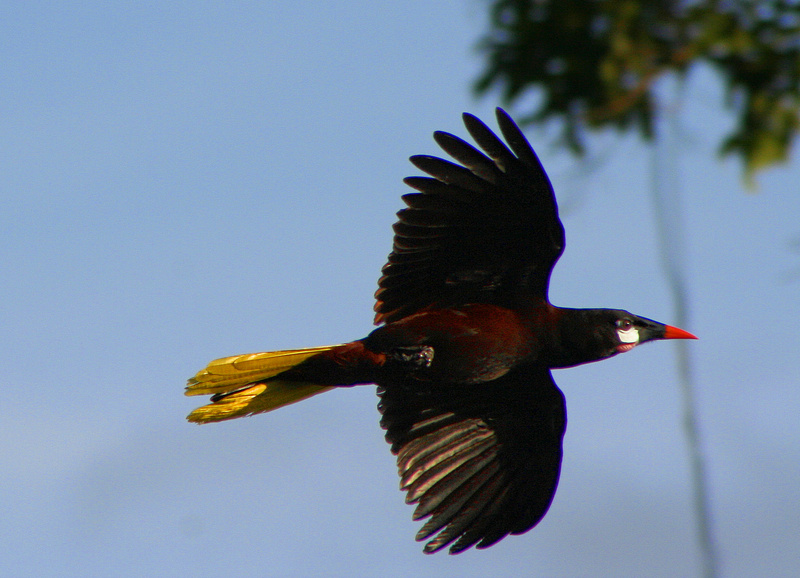|
| Query: oropendola | Result: 3rd of 64 | |
Oropendola (Genus: Psarocolius) - Wiki
| Subject: | Oropendola (Genus: Psarocolius) - Wiki
| |

| Resolution: 2065x1492
File Size: 1595084 Bytes
Date: 2006:04:09 07:20:29
Camera: Canon EOS DIGITAL REBEL XT (Canon)
F number: f/10.0
Exposure: 1/800 sec
Focal Length: 300/1
Upload Date: 2007:12:03 20:48:35
|
Oropendola
From Wikipedia, the free encyclopedia
Order: Passeriformes
Family: Icteridae
Genus: Psarocolius
Synonyms: Gymnostinops (but see text)
[Photo] Montezuma Oropendola (Psarocolius montezuma) in flight, photographed in Costa Rica. Date: 9 April 2006. Source: Flickr (http://www.flickr.com/photos/clearlyambiguous/131678600/). Author: Clearly Ambiguous (http://www.flickr.com/photos/clearlyambiguous/)
The oropendolas comprise two or three genera of South and Central American passerine birds in the New World blackbird family.
All the oropendolas are large birds with pointed bills, and long tails which are always at least partially bright yellow. Males are usually larger than females.
The plumage is typically chestnut or dark brown, although the Green and Olive Oropendolas have, as their names imply, an olive coloration to the head, breast and upper back. The legs are dark, but the bill is usually a strikingly contrasting feature, either pale yellow, or red-tipped with a green or black base. In several species there is also a blue or pink bare cheek patch.
Oropendolas are birds associated with forests or, for a few species, more open woodland. They are colonial breeders, with several long woven basket nests in a tree, each hanging from the end of a branch.
These gregarious birds eat large insects and fruit. They are very vocal, producing a wide range of songs, sometimes including mimicry.
Systematics
6 of the species in the genus Psarocolius indeed belong there:
Black Oropendola, Psarocolius guatimozinus
Chestnut-headed Oropendola, Psarocolius wagleri
Russet-backed Oropendola, Psarocolius angustifrons
Dusky-green Oropendola, Psarocolius atrovirens
Green Oropendola, Psarocolius viridis
Crested Oropendola, Psarocolius decumanus
Four somewhat different species were formerly separated in the genus Gymnostinops. Alternatively, the Crested Oropendola (and possibly others) would also belong here (Price & Lanyon 2002):
Montezuma Oropendola, Psarocolius montezuma
Baudo Oropendola, Psarocolius cassini
Par?? Oropendola, Psarocolius bifasciatus
Olive Oropendola, Psarocolius yuracares - formerly in bifasciatus (as "Amazonian Oropendola")
Price & Lanyon (2002) used mtDNA cytochrome b and NADH dehydrogenase subunit 2 sequence data to research oropendola phylogeny. As is fairly obvious from morphology, the Band-tailed Oropendola, Ocyalus latirostris and Casqued Oropendola, Psarocolius oseryi are the most distinct oropendola species. In fact, they appear to be more closely related to the Caciques and both species would go into Ocyalus. Alternatively, the Casqued Oropendola may be separated in Clypicterus, which like Ocyalus would then be a monotypic genus.
http://en.wikipedia.org/wiki/Oropendola
| The text in this page is based on the copyrighted Wikipedia article shown in above URL. It is used under the GNU Free Documentation License. You may redistribute it, verbatim or modified, providing that you comply with the terms of the GFDL. |
|
^o^
Animal Pictures Archive for smart phones
^o^
|
|

